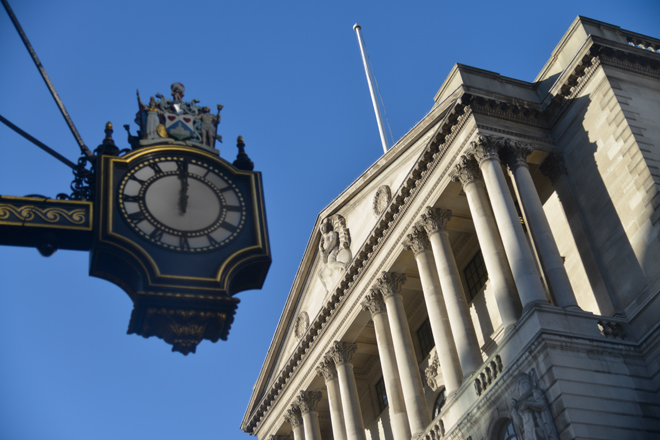Subscribe
Sign up for timely perspectives delivered to your inbox.
Multi-Asset Portfolio Manager Oliver Blackbourn responds as the Bank of England defies expectations and maintains interest rates at a record low of 0.1%.

Today’s (4 November) decision by the Bank of England to keep interest rates at 0.1% may have surprised many in the markets. It had seemed in recent weeks that the Governor and Chief Economist were going out of their way to make sure that there was to be no surprise if interest rates rose. In the end, the vote for a rate hike was in line with prior calls to end quantitative easing early, although there was a notable additional vote for an early cessation. The UK gilt curve steepened as yields on shorter-dated bonds slumped, with sterling weakening as well. The UK equity market gained, given the usual read across from the pound.
Former governor Mark Carney was labelled the ‘unreliable boyfriend’ over his confusing communication, and there is a risk that Governor Andrew Bailey could inherit this moniker following his public statements ahead of today’s announcement. After taking time to seemingly warn markets about potential lift off, it may be particularly perplexing for many that the Bank then chose to push against markets that had priced in a steeper path for interest rates. However, the Bank pointed to its estimates that such a path would take inflation back below target by the end of the forecast period, something that markets seem less convinced of given the inflation outlook being expressed by 10-year breakeven rates.
Data this morning showed that the vast majority of those still on furlough prior to the September wind down have returned to work. This means that the unemployment rate will only rise incrementally once those made unemployed are incorporated into the next set of data to be released. The Bank had been expecting a smooth transition and did not have this data prior to making the policy decision. While it is bumpier than expected, it is unlikely to be disappointing enough alone to sway them from the hiking path over the next few months. In fact, it was noted by some members that there was little evidence that the end of furlough helped to ease conditions in the labour market, where rising wages remain the most important factor when trying to assess the longevity of these elevated inflation levels.
The UK yield curve steepened in the aftermath of the announcement, with shorter-maturity yields moving down significantly more than longer-dated equivalents. Investors must now try to discern how hawkish the Bank really is. Markets had become worried about a policy mistake and today’s decision may ease some of those fears, ultimately helping yields rise further. The Bank is clearly concerned about the feed-through from inflation into economic growth, a factor that had been weighing on interest rate pricing a couple of years out. However, there will be questions about the commitment to the inflation target, given that breakeven rates indicate that inflation is expected to stay far above target on average over the next decade.
It was no surprise that the pound was weaker following the decision to maintain interest rates so close to zero and the negative comments about the growth outlook. UK equities were buoyed by the decline in sterling as it helps to boost the value of the large proportion of foreign earnings. However, financials saw a fall as slower increases in interest rates and lower bond yields may weigh on bank earnings.